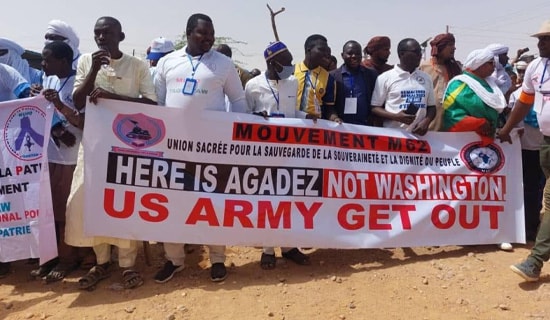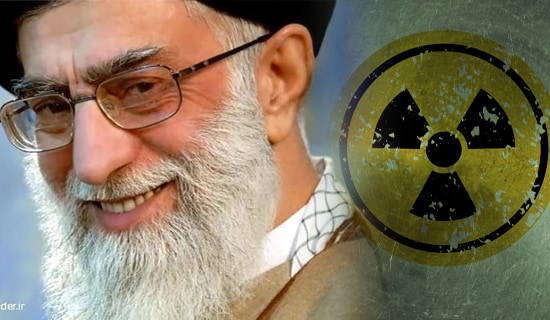An article published May 17, 2022 by Taiwan's Global Defense Magazine discussed the lessons that Taiwan can learn from Ukraine to counter China.
According to the article, titled "The Russia-Ukraine War Is Hard to Stop: How To Handle It if It Happens on the Battlefield in the Taiwan Strait," if Taiwan loses its sea and air superiority in an initial battle with Beijing, and the war moves onto the land, the Ukrainian urban warfare scenario may be repeated in Taiwan, and Taiwanese troops may constitute a huge obstacle for the invading forces.
Below is the article:[1]

(Source: Opinion.udn.com)
'The Ukrainian Forces Have Switched From Being Completely Defensive To Being Both Defensive And Offensive'
"The Russia-Ukraine war is still going on, and at this time Russia's forces seem to be in a serious quagmire, [as Russia] is completely unable to achieve its established goals: to overthrow the pro-West government in Ukraine and to establish a pro-Russia puppet regime. On its Victory Day, May 9, Russia made no special announcement, and the overall situation is eerie and murky.
"Since the end of the Cold War, the U.S., with its superior military power, has easily defeated militarily inferior rivals on the battlegrounds of the Middle East. Although Russia has reorganized and strengthened its military in recent years, it remains inferior to the U.S. and NATO in terms of technology and combat experience. In general, while Ukraine is backward in its combat power, the eight-year war in eastern Ukraine has [honed] its combat experience [until it is] no less than that of the Russian military. With U.S. support and training, some concepts of the Ukrainian military are [now] even more advanced than those of the Russian military. Therefore, the gap in combat power between the two sides is not as wide as imagined.
"The latest development of the war shows that the Ukrainian forces have gone from being completely defensive to being both defensive and offensive, and have even begun to recover lost territory. Some Russian troops have been so badly damaged that they had to adopt a defensive posture to recuperate.
"This is not good news for China, or for any other country that intends to conquer other countries' territories or change the status quo. But it is clearly motivating and encouraging for democracies that are in strategic defense."
'The Broad Use Of Precision-Guided Weapons'
SUPPORT OUR WORK

"The Russia-Ukraine war showed several shifts in war trends. The first is the broad use of precision-guided weapons, and the second is the impact that a country's urbanization may have for the military action taken by one country to invade another. As in any war in the post-Cold War period, precision-guided weapons have played a very important role in the Russia-Ukraine battlefield. Although they have not yet helped either side achieve an overwhelming victory, Ukraine is using the weapons provided by the Western countries to at least effectively delay the Russian offensive, and is inflicting heavy losses on the Russian forces; this has often taken place in towns and cities.
"Taking anti-tank weapons as an example, it is generally believed that in ground battle, tanks are the weapons offering the strongest firepower, the best maneuverability, and the strongest protection. However, as has been seen on Middle East or other battlefields, when they are confronted by individual soldiers armed with anti-tank missiles or rockets, tanks are often very vulnerable, and compared with the individual soldiers who have little with which to shield themselves, the exchange ratio is simply a good deal. Especially in the Russia-Ukraine war, Ukrainian soldiers have received almost the most advanced anti-tank weapons in the West, such as American-made FGM-148 Javelin anti-tank missiles, Swedish-made AT-4 anti-tank missiles, or Next-generation Light Anti-tank Weapon (NLAW) provided by Britain. [This] shatters the myth of Russian arms dealers or the official propaganda about the superior performance of Russian-made weapons.
"Even if the Russian army had sent its most advanced T90M tank, it still cannot withstand an attack by this type of advanced individual hand-held weapon, which may make the theory of 'the uselessness of tanks' resurface. One thing to point out is that a tank is designed for battle on the plains, not steep hills, so the tanks did not perform well on the Afghanistan battlefield.
"In addition, light armored vehicles, or unprotected trucks, are also vulnerable to [attacks by] small suicide drones, making them even more vulnerable to this asymmetric warfare. It is a pity that the U.S., Germany, and other countries cannot provide their M1A2 or Leopard 2A6 and other tanks. Otherwise, in the case of the Russian army's new generation of tanks, such as the T14 or T90M, the design philosophy of these tanks could be tested on the battleground, to see whether they can fight the Western tanks.
"The same is true with the Russian Air Force, which performs poorly on the battlefield. The Russian Air Force has the Su-35 and other warplanes, which are far superior to [those of the] the Ukrainian Air Force, but they seem to be less effective on the battlefield than they should be. Also, it [the Su35] has been repeatedly rejected by potential customers, including Egypt, Algeria, and Indonesia. The Russian process of planning and implementing large-scale air operations is rough and inexperienced, and this may be why the Russian Air Force has not been able to continuously provide air support to its ground forces after mastering air superiority in Ukraine to reverse the unfavorable situation of the war.
"In the urban combat environment, the effect of air support will be limited, while it is favorable for small teams of troops with small portable precision-guided weapons to use buildings and other features as cover from which to effectively launch lethal attacks against the Russian offensive troops. In addition, roads, rubble, and blind spots provided by various buildings or roadways also provide excellent cover and ambush sites for the defending forces, and of course constitute major obstacles for the offensive routes."
'Modern Equipment Is Equally Vulnerable To Precision Weapons On Land And At Sea'
"In terms of longer-range strikes, since Russia and Ukraine are bordered by land, if Ukraine has a long-range strike capability, targets in Russia can also be easily destroyed. In recent months, there has been news that the targets in Russia have been attacked. Ukraine's land-based anti-ship capability is also powerful, to some extent. Ukrainian-made P360 'Neptun' land-based anti-ship missiles (Ukraine has not yet obtained the U.S.-made Harpoon anti-ship missiles) have caused damage to the most powerful – but not the most advanced – Russian naval guided missile cruiser, the Moskva. According to limited reports, Ukraine fired two missiles and both hit the Moskva. The cruiser was supposed to be in charge of air defense in the Black Sea, where Western countries could threaten Russia's amphibious landing operations from the Black Sea in eastern Ukraine.
"The Moskva may be only an old Russian naval ship, but there was another report from Ukraine that it had hit the Admiral Makarov, a frigate and the most modern Russian surface ship with stealth features that reduce radar wave reflection, [equipped] with the new Fregat M2M air search radar, and [with] 24 9M-317M air defense missiles, two close-in weapon systems, and an eight-unit short-range close-in missile launcher. The ship was launched in 2015, and was commissioned in 2017. It is the latest ship of the Russian Navy and it was supposed to be able to handle an attack from one anti-ship missile... yet its current status is unknown.
"This is the 11th ship lost by the Russian Navy since the outbreak of the Russia-Ukraine war. It is worth noting that Ukraine has little maritime combat capability. These results were all achieved with land-based firepower, including the Russian patrol boats that were attacked using Ukrainian Baykar Bayraktar TB2 UAVs.
"An investigation into the details of the Russia-Ukraine naval battle may not be made public until years later, when Russia rebuilds its relations with the West or when there is a change of regime. However, the Russia-Ukraine war showed at least one thing – namely, that modern equipment is equally vulnerable to precision weapons on land and at sea, and especially at sea."
'Taiwan's Anti-Surface Ship Capability Is… Far Superior To That Of The Ukraine's Combat Forces'
"Unlike in the Russia-Ukraine war, China and Taiwan are separated by a strait. Naval warfare is different from land and air [warfare]. Soldiers and vehicles on the ground can rely on the terrain for cover, and warplanes can accelerate to evade attack, but there is no cover at sea, so the only way is to try to stay away from land and deploy outside of the range of land-based missiles. Butthe amphibious ships cannot do this.
"If the CCP launches a landing operation against Taiwan in the future, amphibious ships must conduct sea-crossing operations at a certain distance from the land, which may be threatened by the same anti-ship weapons in the Taiwan Strait or other surrounding waters. Taiwan's anti-surface ship capability is certainly far superior to that of the Ukraine's combat forces.
"Even if the landing troops survive the missile attack and land by luck, then their nightmare will be just beginning. Taiwan is a small, densely populated territory, and its land area is only one-twentieth of Ukraine's, but its population density is nine times Ukraine's and is more concentrated in cities and towns. In addition, most of Ukraine is plain, while in Taiwan, its plains are mainly in the west, with a smaller [plains area] in the east; the rest [of the terrain is] mountains, hills, basins and terraces, etc. The largest area of Taiwan's topography is the mountainous area, with an area of 70% of the land, which again provides Taiwan with a geographical advantage for land defense. Not only can the mobile missile launcher vehicles that attack sea targets use the city, buildings, roads, and other barriers as shields, they can also use mountains as cover. Taiwan's intelligence surveillance and reconnaissance facilities are also situated primarily in high mountains, leveraging these positions' broad view from afar.
"If Taiwan loses its sea and air superiority in the initial battle (and if it does not, the war will not progress to this next stage), and the war moves onto land, then the urban warfare scenario in Ukraine may be staged in Taiwan, in which [Taiwan's] well-trained troops will constitute a huge obstacle to the invading forces, using high-performance and precision-guided weapons and relying on geographic terrain and features as covers, just like [Ukrainian fighters are doing] on the Ukrainian battleground.
"However, this does not mean that the troops or people on the island of Taiwan can sit back and relax without worrying about enemy invasion. After all, our adversary will also learn the lessons of the Russia-Ukraine war, and it too possesses a variety of precision-guided weapons – not to mention other asymmetric means. In the Russia-Ukraine war, the use of innovative asymmetric tactics such as drones, various offensive and defensive operations of command, control, communication and ISR [Intelligence, Surveillance and Reconnaissance], the use of the Internet and propaganda warfare, and the mobilization of people's morale have all become good references.
"Therefore, the lesson of the Ukrainian battlefield is that the proper applications of the correct defense method will effectively resist the enemy's invasion, and good preparation can remind the enemy that the cost of an invasion is very high. [Hence,] there is a chance to deter the enemy from an invasion."
[1] Opinion.udn.com/opinion/story/120902/6316674, May 17, 2022.




